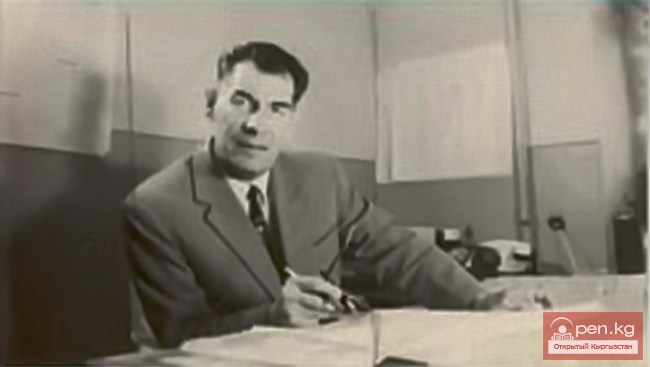
F.A. Fielstrup - one of the first ethnographers studying the Kyrgyz
One of those who stood at the origins of Soviet ethnographic science, but whose name was unjustly forgotten for many years, was F.A. Fielstrup (February 19, 1889 - December 7, 1933).
Fedor Arturovich Fielstrup was born in St. Petersburg into the family of an electrical engineer.
During his student years, Fedor Arturovich engaged in translation work and was repeatedly invited to the British Embassy in St. Petersburg for receptions when there was a shortage of staff translators.
As a translator, F.A. Fielstrup, in his youth, in 1912-1913, undertook two interesting journeys with American scientists: to the Caucasus with botanist Miller and to Mongolia with anthropologist and curator of the National Museum of Washington A. Hrdlička.
F.A. Fielstrup was one of the first specialists - ethnographers studying the Kyrgyz of Central Tien Shan (from the headwaters of the rivers Tyup and Dzhergalan in the east to Susamyr in the west; from the valley of the Big Keby River in the north to the valley of the Arpa River in the south), as well as the Talas region and the pre-Fergana part of Kyrgyzstan. Traveling across this considerable territory in 1924, 1925, and 1929, he collected a wealth of material reflecting all aspects of traditional Kyrgyz economy and life.
Kyrgyz materials in F.A. Fielstrup's personal archive are represented by three diaries, five notebooks with records, three detailed handwritten reports on his field research in Kyrgyzstan for 1924-1925, and one notebook for 1924-1926, which included descriptions of acquired collections and records of expenses.
The scientist began to systematize the information collected in Kyrgyzstan: each entry on a specific topic was transferred by him from the notebook to a "card" (at that time, any scrap of paper that happened to be at hand could serve as a card), and the cards were grouped by themes. Some cards contain relevant excerpts from literature.
F.A. Fielstrup's scientific interests were not limited to ethnography alone. As a representative of the Russian scientific school, he understood that any research requires a comprehensive approach, and therefore, alongside ethnographic material, he collected linguistic (dialectological) data and folklore, including ritual folklore.
Fielstrup's field records allow for: examining to a certain extent the traditional social and economic structure of Kyrgyz society; identifying archaic layers of the worldview system of the Kyrgyz and other Turkic peoples, their ideas about the universe and man as a part of the universe, and about man's place in nature and society; finding the common and the unique in the development of the culture of the Kyrgyz and other Turkic peoples, their ethnogenetic and cultural connections.
During his expeditions, Fielstrup paid great attention to collecting terms, being one of the first ethnographers to appreciate the importance of detailed documentation of terminology for ethnography as a science.
He understood that precise knowledge of a term, clarifying its etymology helps not only to delve deeper into the idea underlying the designated object but also to uncover its ethnogenetic roots, which, as already mentioned, particularly interested Fielstrup.
The explanations of numerous terms that abound in both Fielstrup's field records and the descriptions of the collections he gathered for museums are very detailed and vivid. These are practically ready-made dictionary entries.
F.A. Fielstrup was arrested on November 26, 1933, in the so-called case of the Russian National Party, sometimes also referred to as the "case of the Slavists," which was fabricated, like most accusatory "cases" of that time. He died a painful death: during another interrogation, unwarned by the guards, he swallowed scalding hot water and, suffering severe burns, choked in a state of shock. He was rehabilitated on May 8, 1958.
Historical Figures















































